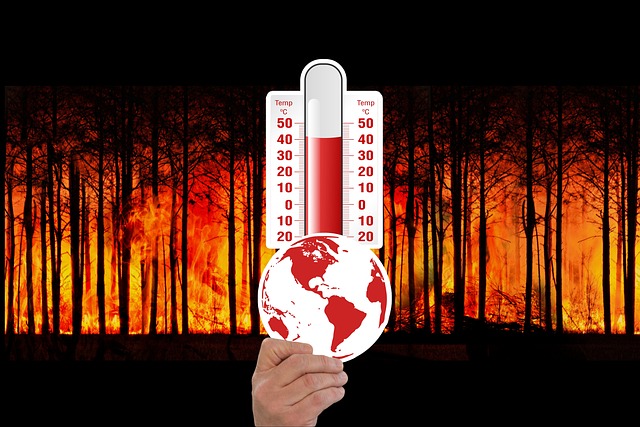The escalating impacts of climate change, from increasingly frequent and intense heatwaves and droughts to devastating floods and rising sea levels, demand urgent and comprehensive action. Within the global response, two distinct yet interconnected strategies have emerged as crucial pillars: climate change adaptation and climate change mitigation. While both aim to address the challenges posed by a warming planet, they operate on different timescales and target different aspects of the problem. Understanding the nuances and the critical interplay between adaptation and mitigation is essential for crafting effective and resilient solutions to the climate crisis.
Climate change mitigation focuses on tackling the root cause of the problem: the emission of greenhouse gases into the atmosphere. These gases, primarily carbon dioxide, methane, and nitrous oxide, trap heat and drive global warming. Mitigation efforts aim to reduce these emissions by transitioning away from fossil fuels towards renewable energy sources like solar, wind, and hydro power. Enhancing energy efficiency in buildings, transportation, and industry also plays a significant role. Furthermore, protecting and restoring forests and other natural carbon sinks, which absorb carbon dioxide from the atmosphere, is a crucial mitigation strategy. Sustainable land management practices in agriculture and forestry can also contribute to reducing emissions and enhancing carbon sequestration.
The overarching goal of mitigation is to limit the extent of future warming and its associated impacts. By curbing greenhouse gas emissions, we can strive to keep global temperature increases within manageable levels, ideally aligning with the goals of the Paris Agreement to limit warming well below 2 degrees Celsius and pursue efforts to limit it to 1.5 degrees Celsius above pre-industrial levels. Mitigation is a long-term endeavor, requiring systemic changes across all sectors of the economy and society. The benefits of successful mitigation are global and intergenerational, preventing the most severe and irreversible consequences of climate change for future generations.
Climate change adaptation, on the other hand, acknowledges that some level of climate change is already happening and that further changes are inevitable, even with ambitious mitigation efforts. Adaptation focuses on adjusting to the actual or expected future climate and its effects. It involves implementing measures to reduce our vulnerability to the impacts of climate change and enhance our resilience. Adaptation strategies are diverse and context-specific, tailored to the particular risks and vulnerabilities faced by different regions, sectors, and communities.
Examples of adaptation measures are wide-ranging. Coastal communities may invest in seawalls, mangrove restoration, or relocation strategies to cope with rising sea levels and increased storm surges. Agricultural regions facing more frequent droughts might adopt water-efficient irrigation techniques, cultivate drought-resistant crops, or diversify their livelihoods. Public health systems can prepare for heatwaves by developing early warning systems and improving access to cooling centers. Infrastructure, such as roads and bridges, can be designed and upgraded to withstand more extreme weather events. Building codes can be revised to ensure structures are more resilient to floods, storms, and wildfires.
Adaptation is about building resilience at all levels – from individual households and local communities to national economies and ecosystems. It involves understanding the specific climate risks, assessing vulnerabilities, and developing and implementing strategies to minimize negative impacts and capitalize on potential opportunities. Unlike mitigation, which has a more global and long-term focus, adaptation often yields more immediate and localized benefits by reducing current vulnerabilities to climate hazards.
While mitigation and adaptation address different facets of the climate challenge, they are not mutually exclusive; in fact, they are deeply interconnected and mutually reinforcing. Effective climate action requires a balanced and integrated approach that strategically deploys both strategies.
Mitigation reduces the need for future adaptation. The more successful we are in limiting greenhouse gas emissions, the less severe the future impacts of climate change will be, and the less extensive and costly adaptation measures will need to be. Conversely, adaptation can enhance the effectiveness of mitigation efforts. For example, investing in climate-resilient infrastructure can support the deployment of renewable energy technologies, making them less vulnerable to extreme weather events. Furthermore, adaptation measures can build public support for climate action in general, including mitigation policies, by demonstrating tangible benefits at the local level.
However, there can also be trade-offs and complexities in implementing both strategies. Some adaptation measures, if not carefully planned, could inadvertently increase greenhouse gas emissions. For instance, relying heavily on air conditioning for heatwave adaptation can increase energy demand and emissions if the electricity is generated from fossil fuels. Therefore, it is crucial to pursue climate-smart adaptation strategies that minimize negative environmental impacts and, where possible, offer co-benefits for mitigation.
In conclusion, climate change adaptation and mitigation are two essential sides of the same coin in the global effort to address the climate crisis. Mitigation tackles the root cause by reducing greenhouse gas emissions, aiming to limit the extent of future warming. Adaptation, on the other hand, focuses on adjusting to the impacts that are already happening and those that are unavoidable. A comprehensive and effective climate response requires a balanced and integrated approach that strategically deploys both mitigation and adaptation measures, recognizing their interconnectedness and striving for climate-smart solutions that build a more resilient and sustainable future for all.
